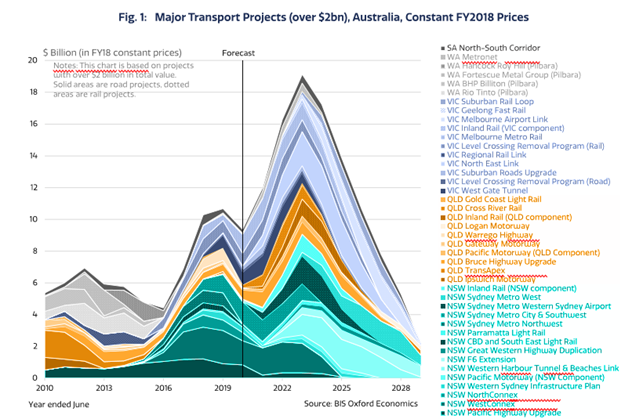
The Great Construction Squeeze
In our new series of blogs, our team is taking a look at the challenges associated with the delivery of infrastructure and engineering projects and the opportunities to improve each aspect of the process from planning and procurement, through contract delivery, management and completion.
In our first blog, we examine the Great Construction Squeeze.
The Great Construction Squeeze
It is true to say that there is a fair amount of pressure on the construction and infrastructure sectors at this time.
With billions being invested across Australia, there is a strong desire for infrastructure to lead the nation’s recovery from the COVID-19 pandemic. There is a desperate need from society and business for infrastructure to sustain and enhance our way of life, from improved transport connections to safeguarding energy and water supply. To cap it all off, there is now an Olympics to contend with and the global spotlight, threat of overruns and cost blowouts that are associated with a global event.
And while it is safe to say that there are billions of dollars washing through the sector, the reality is that things are not as good as they would appear for many of the sector’s key operators and throughout the entire supply chain.
According to the Australian Constructors Association in their publication Constructing The Future:
Construction industry profits collapsed between 2014 to 2018[1], and many well-established construction businesses have gone out of business or been sold. The construction industry currently has the highest number of insolvencies of any major industry sector in Australia[2].

Therefore the industry is in a bit of a squeeze caused by complex projects, falling revenues, fewer businesses to bid for work. Fundamentally this means less competition, and as a consequence, it could be argued that the sector is in need of reform. Not reform to ensure huge profits, but reform to create sustainability and ensure that Australia has the infrastructure we need to power commerce, create connections and enhance our way of life.
As a sector, we have to look at every aspect of how we scope, design, bid, procure, and deliver projects to ensure that clients have the assets they require, contractors reach the margins needed to thrive, and society benefits from the numerous positives associated with infrastructure investment.
In our upcoming blogs, we hope to examine the key issues that challenge the sector and suggest how, through positive steps, we can release the pressure valve.
[1] ABS (2020) Business Indicators, Australia, Cat. No. 5676.0, March 2020, Australia.
[2] ASIC Insolvency Statistics March 20
